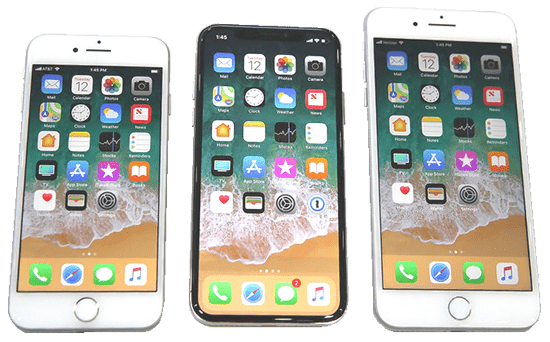
Over 10 years ago a man by the name of Steve Jobs would walk out on to a stage, announce the first iPhone, and change the world forever. This device birthed industries for manufacturers and developers everywhere – applications, phone cases, competing phones, tablets, and a whole lot more. Ever since Jobs and Apple showed us the first model, each subsequent iPhone release brought new innovation and features to the smartphone playing field and competitors like Samsung and Google were beginning to take notice.
The year is now 2019, and with the end of the year coming up, we’re hearing all about phone manufacturer’s new devices and innovations they’ve been crafting on their next high-end devices. However, with all of this high-end innovation, comes high-end price tags. For example, the iPhone X launched in 2017 at $999 dollars and plenty of people were outraged. Other phone companies were following suit as the latest Samsung flagship (s10) can be priced well over $1,000 dollars depending on which options you opt for!
In order to quail some outrages, here are a few reasons you can start looking for a mid-range device and no longer sacrifice too much on speed, quality, or capability.
- Mid-Range Phones Last Just as Long as Their Counterparts
- Phones Aren’t Built to be Ugly Anymore
- Innovation Just isn’t as Innovative Anymore
1. Mid-Range Phones Last Just as Long as Their Counterparts:
That’s right, even though you may not be spending $1,000 bucks on the latest flagship, your mid-range phones priced at just $450 will last just as long as a high-end device when it comes to doing what a phone is supposed to do. At their core, phones make calls, take pictures, send texts, play games, shoot video, etc. Take it from me, I’ve been using my iPhone 7 for 3 years now and it still handles whatever task I throw at it with little to no problems whatsoever.
2. Mid-Range Phones Aren’t Built to be Ugly Anymore:
Back in the day you might look over at your friend’s phone, realized he had something like a Moto Z Play and you probably cringed a little. Cheaply made phones were often associated with Androids by Apple users and that’s because materialistically, a lot of mid-range devices weren’t built for durability. Times have changed though, go look at mid-range devices such as the Xiamoi Mi 9, the One Plus 7, Google Pixel 3A, or even the Honor 10. These devices are certainly considered mid-range but none of them bring a cheap look. Manufacturers are taking notes from high-end designers and crafting mid-range devices with near bezel-less displays, non-invasive cameras, and bright/beautiful OLED supported pictures.
3. Innovation Just isn’t as Innovative Anymore:
Part of the outrage that came with the announcement of the iPhone X was associated with what was being offered – there wasn’t much changing from the previous model in terms of power. The iPhone 8 and iPhone X both have the A11 Bionic chip, comparative RAM memory, and the iPhone 8 battery lasts slightly longer. On the other hand, the iPhone X has a superior camera, display, facial recognition, and looks cleaner in terms of its bezel.
So, what gives? Well, really not that much.
When it comes to picking and buying a phone, it boils down to what features you want out of the phone and what you’re ultimately willing to pay. At the end of the day, mid-range isn’t so mid-range anymore. Manufacturers are putting the same quality materials found in the latest iPhones in their budget phones so the decision to save money on a phone will barely decrease quality and performance, but it will certainly not decrease the longevity of your device if you handle your phone with care.

